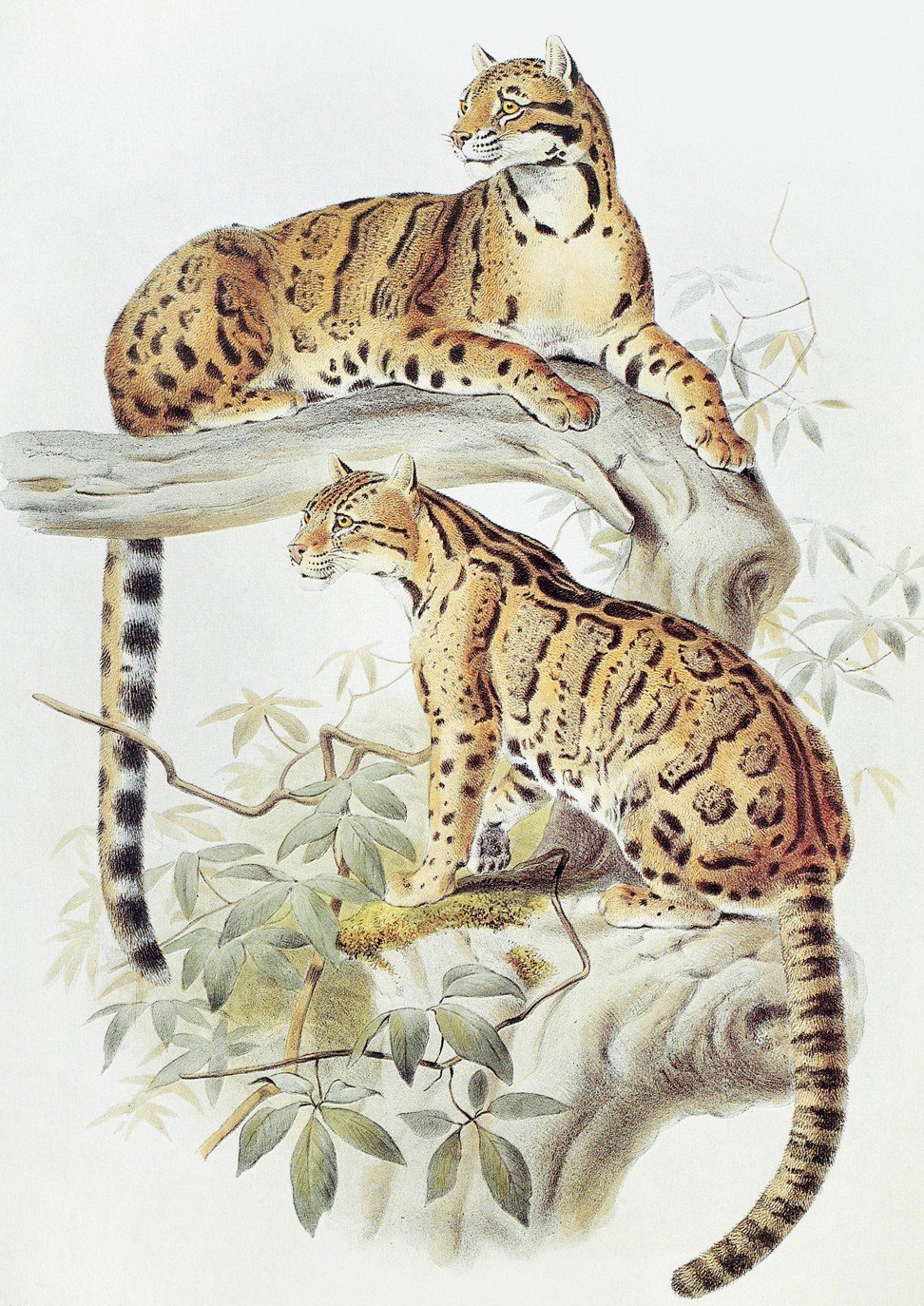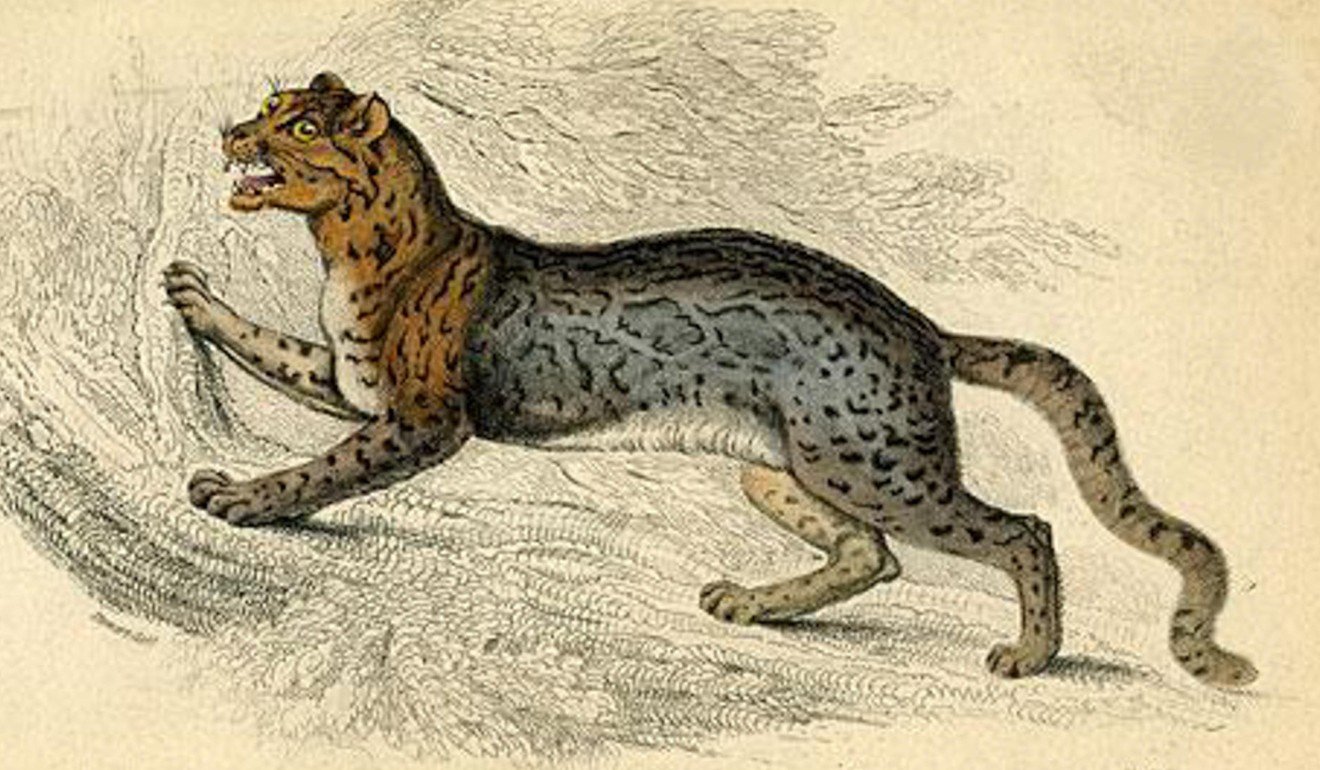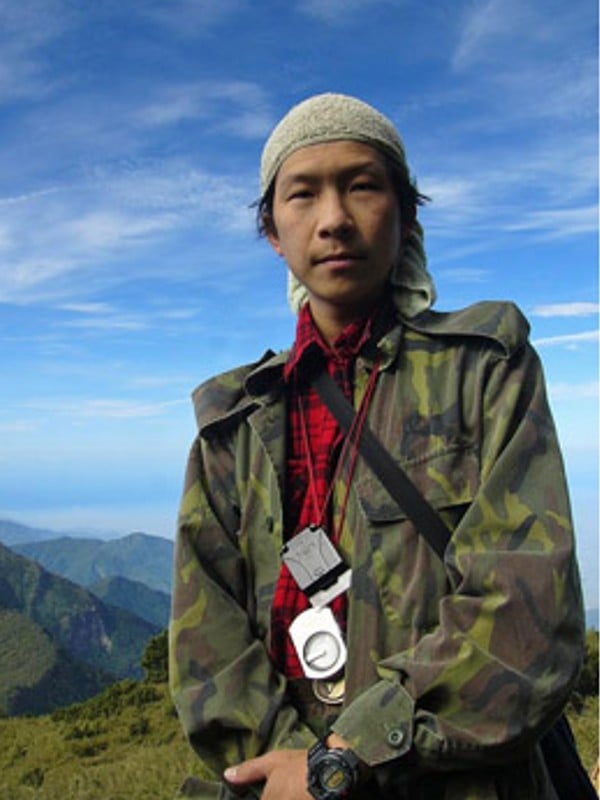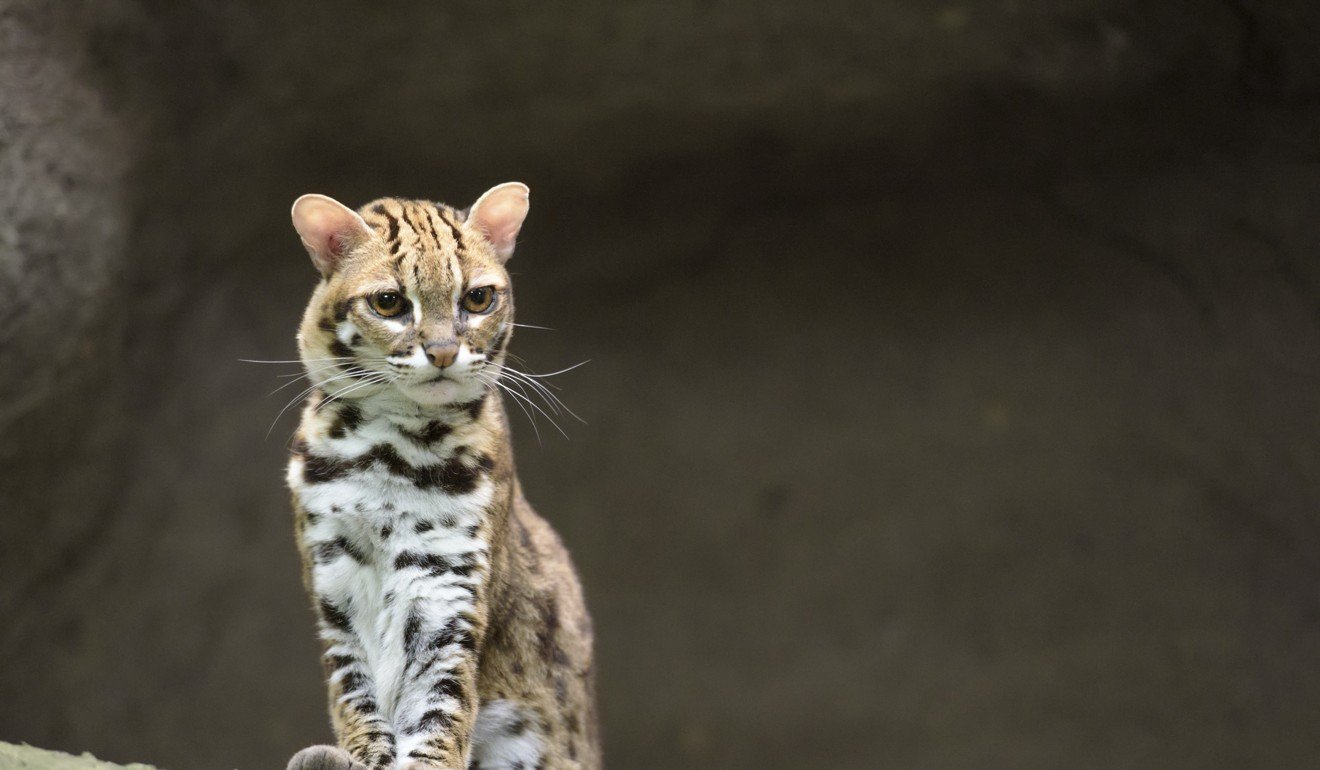
Can Taiwan’s Formosan clouded leopard claw its way back from extinction?
With no confirmed sightings of the big cat in decades, some question whether a Taiwan subspecies of the predator ever existed; it’s a question some say should be answered before captive clouded leopards are released into wild on island

“This is another animal from the distant wilds of the interior, whose skins the savages bring to the borders to barter with the Chinese.”
With these words, published in 1862, British naturalist Robert Swinhoe introduced the Formosan clouded leopard (Neofelis nebulosa brachyura) to the Western world. Europe’s consular representative to Taiwan, he had seen only a few flattened skins on the island, but this was enough for him to distinguish it as a species new to science. Unlike its relatives elsewhere in Asia, wrote Swinhoe, the Formosan clouded leopard had a short tail.

It was declared extinct in 2013, but this is no ordinary story about a big cat being wiped off the planet. There’s a catch. Plans are afoot to bring the svelte feline’s closest relative back to Taiwan – despite lingering questions over whether the Formosan clouded leopard ever existed at all.
Today, Asia is home to two species of clouded leopard: Neofelis nebulosa (clouded leopard), found across the Asian mainland, from the Malay peninsula to the Himalayan foothills of Nepal, and Neofelis diardi (the Sunda clouded leopard), found on the islands of Borneo and Sumatra. Both are at risk of extinction and rarely glimpsed in the wild, even by those who study them.

There haven’t been any sightings of clouded leopards in Taiwan for decades, let alone confirmed ones. In the 1980s, a hunter claimed to have caught one, but this was never verified. As a result, Alan Rabinowitz, now chief executive of the feline conservation group Panthera, interviewed tribespeople and collected seven accounts of recent sightings, but these could not be verified either. Then, in 1990, large paw prints were found near Yushan National Park that may – or may not – have been left by a clouded leopard.

So, beginning in 1997, hundreds of camera traps and hair-trigger snares were set up across the island, and conservation biologists began the long wait for the ghost-like leopards to show their face. Without so much as a flick of a tail recorded, the Formosan clouded leopard was declared extinct 16 years later.
Perhaps it was never there to be found. To this day there is a slight cloud of doubt hanging over Taiwan’s big cat, says Anthony Giordano, of conservation group Species.
It has been so elusive, and what evidence we do have is so sparse, that some have questioned whether it ever lived, explains Chiang Po-jen, chairman of the Formosan Wild Sound Conservation Science Centre, in Taiwan.

An alternative explanation suggests that Taiwan was merely a staging post for traded pelts, as they travelled from Southeast Asia to Japan and mainland China.
But most biologists, including Giordano and Chiang, believe the Formosan clouded leopard was native to Taiwan and was either a subpopulation or subspecies of N. nebulosa. The distinction matters now more than ever; rising populations of clouded leopard prey mean that efforts to reintroduce a big cat to the island are gathering pace.

In August, Species and the National Dong Hwa University, in Hualien county, began filling in the gaps. Researchers are gathering DNA from pelts, teeth and skulls held by the Paiwan people, and recording oral accounts from the Rukai and the Paiwan. If the DNA matches that of living Sunda clouded leopards, this will suggest the pelts arrived on the island as a result of trade, and the Formosan clouded leopard may never have existed.
It would be an unexpected result, says Giordano, but cannot be ruled out.

Recently, Chiang found records from the Japanese occupation of Taiwan (1895-1945) that counter the trade hypothesis. Ammunition was controlled by the Japanese at the time, and hunters had to report how many bullets they used and for what. The records need to be cross-checked but they suggest 24 clouded leopards were shot in 1933.
Even so, reintroduction will not be straightforward. The obvious approach is to release captive N. nebulosa, but for some scientists in Taiwan that won’t do. They see different populations of the same species as exotic, says Kurtis Pei Jai-chyi, of the National Dong Hwa University, so nothing short of reintroducing the same Formosan clouded leopard is acceptable.
“That to me is nuts,” says Rabinowitz. It would rule out any reintroduction efforts unless quite by chance a zoo animal can be found that is a perfect match for the pelt DNA. Subspecies evolve mainly because of geographic separation, and in that sense are entirely artificial, says Rabinowitz. If Taiwan created a subspecies out of N. nebulosa once, the likelihood is that it will do so again over time.
Rabinowitz believes the cat could be reintroduced – a 2015 study shows there is enough habitat to support hundreds of animals – but stops short of saying it should.
“‘Should’ implies there is an ecological reason for it,” he says. For that, the local ecosystem would have to be out of balance due to the gap left by a top predator. Deer and macaque populations have boomed and become a nuisance in recent years, but researchers can’t say for sure that this is because there are no clouded leopards.

It isn’t threatened across much of Southeast Asia, but in Taiwan it is an endangered species.
A toxic mix of pollution, habitat disturbance and persecution – particularly due to the cats’ fondness for farmers’ chickens – has caused its numbers to drop to the low hundreds.

“How are we going to protect clouded leopards if we can’t protect leopard cats?” Giordano says.
But this may be counting our leopards before they have their spots. The first step is to find out for sure whether the elusive feline really existed. If it is confirmed, then at some point in the future, Taiwan may see clouded leopards roaming its forests again and become an important stronghold for the cat’s survival in Asia.
New Scientist
